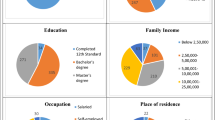Abstract
How consumers pay influences how they feel about a transaction. In particular, paying by card has been argued to have an effect on the perception of cost, making it less salient and painful. We propose and show that payment method also influences how consumers feel about the acquired good. Specifically, we focus on effects of the payment method on psychological ownership, i.e., the perception of an object as “mine.” We propose that cash payment results in stronger psychological ownership because it influences the extent of perceived investment in an object. We provide evidence for the proposed effect from field and laboratory settings. Results of a longitudinal exit survey and an experiment show that cash payers report higher levels of immediate psychological ownership than card payers. However, this effect seems to depend on the meanings associated with a payment method. Asian students (who associate credit card payment with investment and debt) do not exhibit this effect. Moreover, the initial boost in psychological ownership seems to be comparably short-lived. While those paying in cash experience no further increase in psychological ownership over time, those paying by card do.

Similar content being viewed by others
Notes
Dichotomising payment method into a dummy variable (card versus cash) and running Sobel tests also provides no evidence for mediation through pain of payment.
We are grateful to an anonymous reviewer for highlighting this potential implication.
References
Bagchi, R., & Block, L. G. (2012). Chocolate cake please! Why do we indulge more when it feels more expensive? Journal of Public Policy and Marketing (in press).
Feinberg, R. A. (1986). Credit cards as spending facilitating stimuli: a conditioning interpretation. Journal of Consumer Research, 13(3), 348–356.
Gunter, S. (2010). Child Support Payment Method and Father-Child Contact. SSRN eLibrary available at SSRN. Available at http://ssrn.com/abstract=1768307.
Hafalir, E. I., & Loewenstein, G. F. (2009). The impact of credit cards on spending: a field experiment. SSRN eLibrary. Available at http://ssrn.com/abstract=1378502
Hirschman, E. C. (1979). Differences in consumer purchase behavior by credit card payment system. Journal of Consumer Research, 6(1), 58–66.
Inman, J. J., Winer, R. S., & Ferraro, R. (2009). The interplay among category characteristics, customer characteristics, and customer activities on in-store decision making. Journal of Marketing, 73(5), 19–29.
Kamleitner, B., & Hölzl, E. (2009). Cost-benefit-associations and financial behavior. Applied Psychology: An International Review, 58(3), 435–452.
Kamleitner, B., & Rabinovich, A. (2010). Mine versus our: does it matter? In M. C. Campbell, J. Inman, & R. Pieters (Eds.), Advances in consumer research (Vol. 37, pp. 87–88). Duluth: Association for Consumer Research.
Kleine, S. S., & Baker, S. M. (2004). An integrative review of material possession attachment. Academy of Marketing Science Review 1:1. Available at http://www.amsreview.org/articles/kleine01-2004.pdf.
Loewenstein, G. F., & Issacharoff, S. (1994). Source dependence in the valuation of objects. Journal of Behavioral Decision Making, 7, 157–168.
Medina, J. F., Saegert, J., & Gresham, A. (1996). Comparison of Mexican-American and Anglo-American attitudes toward money. Journal of Consumer Affairs, 30(1), 124–145.
Monger, J. E., & Feinberg, R. A. (1997). Mode of payment and formation of reference prices. Pricing Strategy and Practice, 5(4), 142–147.
Morewedge, C. K., Holtzman, L., & Epley, N. (2007). Unfixed resources: perceived costs, consumption, and the accessible account effect. Journal of Consumer Research, 34(4), 459–467.
Peck, J., & Shu, S. B. (2009). The effect of mere touch on perceived ownership. Journal of Consumer Research, 36(3), 434–447.
Pierce, J. L., Kostova, T., & Dirks, K. T. (2003). The state of psychological ownership: Integrating and extending a century of research. Review of General Psychology, 7(1), 84–107.
Prelec, D., & Loewenstein, G. (1998). The red and the black: mental accounting of savings and debt. Marketing Science, 17(1), 4–28.
Prelec, D., & Simester, D. (2001). Always leave home without it: a further investigation of the credit-card effect on willingness to pay. Marketing Letters, 12(1), 5–12.
Raghubir, P., & Srivastava, J. (2008). Monopoly money: the effect of payment coupling and form on spending behavior. Journal of Experimental Psychology: Applied, 14(3), 213–225.
Reb, J., & Connolly, T. (2007). Possessions, feelings of ownership and the endowment effect. Judgment and Decision Making, 2(2), 29–36.
Shimp, T. A., & Moody, M. P. (2000). In search of a theoretical explanation for the credit card effect. Journal of Business Research, 48(1), 17–23.
Soman, D. (2001). Effects of payment mechanism on spending behavior: the role of rehearsal and immediacy of payments. Journal of Consumer Research, 27(4), 460–474.
Soman, D. (2003). The effect of payment transparency on consumption: quasi-experiments from the field. Marketing Letters, 14(3), 173–183.
Thomas, M., Desai, K. K., & Seenivasan, S. (2011). How credit card payments increase unhealthy food purchases: visceral regulation of vices. Journal of Consumer Research, 38(June), 126–139.
Thomson, M., MacInnis, D. J., & Park, C. W. (2005). The ties that bind: measuring the strength of consumers’ emotional attachments to brands. Journal of Consumer Psychology, 15(1), 77–91.
Wagner, S. H., Parker, C. P., & Christiansen, N. D. (2003). Employees that think and act like owners: effects of ownership beliefs and behaviors on organizational effectiveness. Personnel Psychology, 56(4), 847–871.
Wickramasinghe, V., & Gurugamage, A. (2009). Consumer credit card ownership and usage practices: empirical evidence from Sri Lanka. International Journal of Consumer Studies, 33(4), 436–447.
Acknowledgments
The authors are grateful to SBM QMUL seedcorn fund for financial support, to Mehmet Topal for support in study 1, and to Shaherun Islam, Rida Rashid, Rani Narayanan, and Dominique Silao for help in conducting study 2. Most of the research was conducted while the first author was at Queen Mary, University of London.
Author information
Authors and Affiliations
Corresponding author
Rights and permissions
About this article
Cite this article
Kamleitner, B., Erki, B. Payment method and perceptions of ownership. Mark Lett 24, 57–69 (2013). https://doi.org/10.1007/s11002-012-9203-4
Published:
Issue Date:
DOI: https://doi.org/10.1007/s11002-012-9203-4




